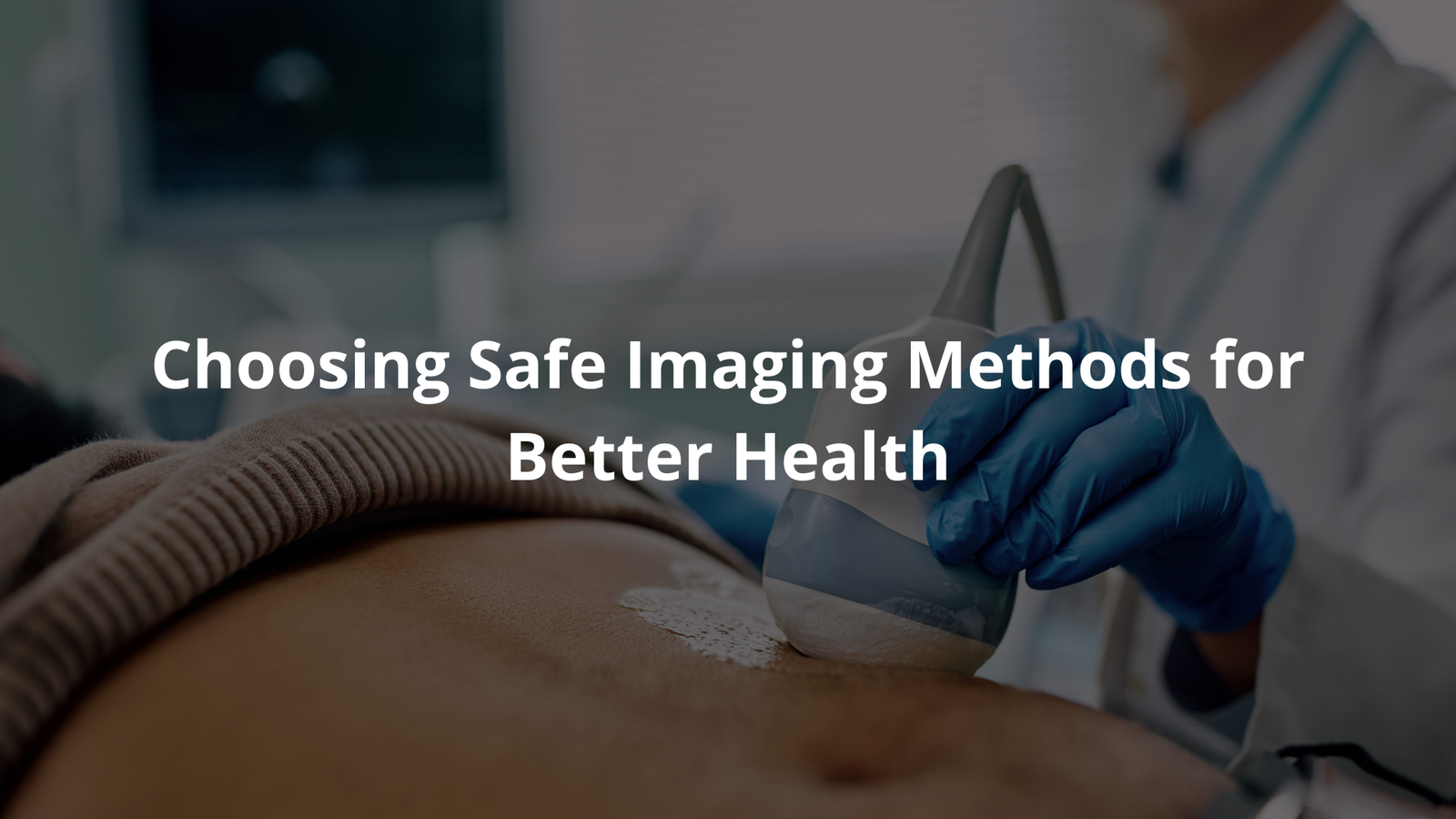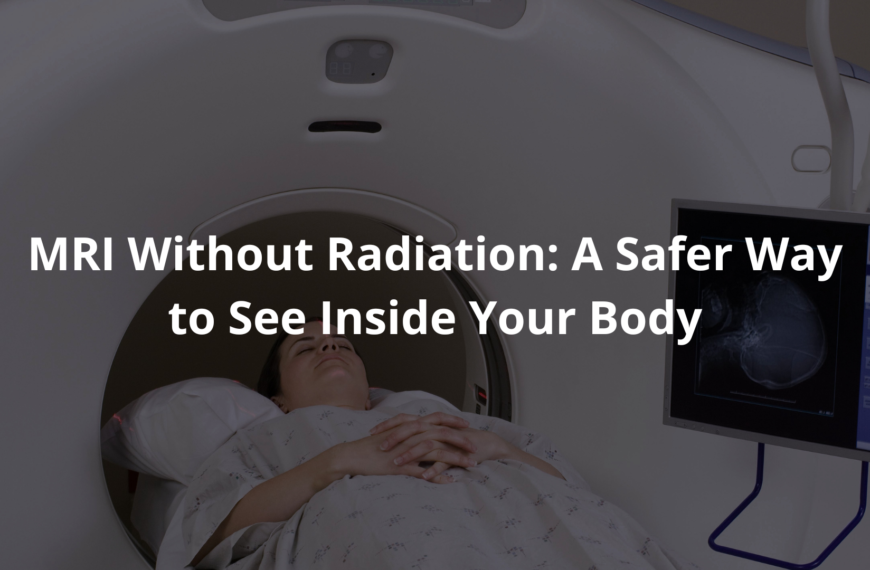Learn how to choose safe imaging methods that balance benefits and risks while keeping you healthy.
Choosing safer imaging is a priority for doctors and patients. X-rays and CT scans are valuable diagnostic tools, but do involve radiation exposure. Doctors carefully consider these risks.
Magnetic Resonance Imaging (MRI), which uses magnets, and ultrasound, which uses sound waves, are radiation-free alternatives. Doctors weigh the advantages and disadvantages of each method, especially for children, who are more susceptible to radiation’s effects. A doctor might consider a patient’s entire history of imaging when recommending a new scan to limit overall radiation exposure.
When a scan is necessary, people should ask about available options. They might ask if an MRI could replace a CT scan, or if the radiation dosage can be lowered. Informed patients and doctors working together is what leads to the safest outcome. Read on, for more information on imaging safety.
Key Takeaway
- Doctors should use imaging only when it’s really needed.
- Non-ionising methods like MRIs and ultrasounds are safer for some people.
- Always follow guidelines to keep everyone safe during imaging.
Understanding the Need for Safe Imaging
Doctors, bless their cotton socks, they’re always trying to get to the bottom of things when someone’s feeling crook. They’ve got their imaging methods, see, like X-rays, CT scans, and ultrasounds; all different ways to have a peek inside us without actually cutting us open. Mind you, some of these methods, like those X-rays and CT scans, they use ionising radiation. Bit of a worry, that.
Radiation, it’s not exactly the best thing for you, especially for little tackers and pregnant women. A CT scan, for instance, it can give doctors a proper clear image, sure, but it also dishes out a bigger whack of radiation than your average X-ray. That’s why they’ve got guidelines. ARPANSA, the Australian Radiation Protection and Nuclear Safety Agency, they reckon we should use the lowest effective dose possible.
- Imaging Methods: X-rays, CT scans, ultrasounds
- Radiation Risk: Higher in CT scans than X-rays
- Regulation: ARPANSA sets guidelines for radiation use.
The key is to think about whether a scan is actually needed in the first place. If there’s another way to diagnose the problem, maybe they should give it a burl. It’s about weighing up the benefits against the risks. A little bit of careful consideration can save a whole lot of worry later on.
Why Use Non-ionising Imaging?
Now, non-ionising imaging methods, they’re the safer option because they don’t muck about with radiation. Think of it like choosing a bike over a motorbike; less chance of a nasty spill. These methods include MRIs (Magnetic Resonance Imaging) and ultrasounds. Two good options to consider.
MRI (Magnetic Resonance Imaging): This one uses magnets and radio waves to conjure up pictures of your organs and tissues. It’s dead handy for having a squiz at the brain or joints, but you’ve gotta be careful. They have to check that nothing inside you might get a bit funny from the magnets. When my neighbour had an MRI, she had to ditch her bling and even her hairpins!.
Ultrasound: This uses sound waves to make the pictures. It’s often used to check on bubs in pregnant women. Safe as houses, and it doesn’t hurt a bit! My sister had heaps of ultrasounds to check on her little ankle-biter.
- Non-Ionising Methods: MRI, Ultrasound
- MRI Tech: Magnets and radio waves
- Ultrasound Tech: Sound waves
These methods are cracking for keeping everyone safe while still giving the doctors the pictures they need. Doctors should probably consider these options first. Less radiation, less worry. What’s not to like?
Making Smart Decisions with Imaging
Credits: Penn Highlands Healthcare
Doctors, they’ve got to be sure that every imaging scan is fair dinkum necessary. It’s all about something called “justification.” Before they send you off for a scan, they’re meant to ask themselves, “Will this scan actually help me make a better decision for my patient?”. [1]
Sometimes, a doctor might think they need a scan straight away, but they can often find other ways to sort things out. A good old-fashioned physical exam or just having a proper yarn with the patient can do the trick.
Guidelines are there to help doctors pick the right imaging method for the job. For instance, the Western Australian Diagnostic Imaging Pathways (WA DIP) – another one of those long-winded names – gives doctors a roadmap to figure out what imaging to use for different problems. It’s like having a treasure map showing the safest path to find the treasure and not disturbing dangerous wildlife along the way!
- Justification: Ensuring scans are necessary
- Alternatives: Physical exams, patient consultation
- Guidelines: WA DIP as a roadmap
If you’re ever told you need a scan, it’s worth asking your doctor why they think it’s necessary and if there are any other options. Being informed is your best defence against unnecessary radiation and potential problems down the line.
Special Care for Sensitive Groups
Certain folks need a bit of extra looking after when it comes to imaging, fair dinkum. Some people are more vulnerable to the dangers of radiation.
Kids: Little tackers’ bodies are more sensitive to radiation than grown-ups. That’s why there are special paediatric imaging protocols to keep exposure down. It’s like wearing a helmet when you’re tearing around on your pushbike; keeps you safe if you have a stack.
Pregnant Women: Expecting mums get extra care and attention, doctors try to avoid radiation unless it’s absolutely necessary. They often lean towards non-ionising methods like ultrasounds. It’s also the best way to find out if you’re having a boy or girl. [2]
- Vulnerable Groups: Children, Pregnant women
- Children’s Care: Paediatric protocols for reduced exposure
- Pregnancy Care: Preference for non-ionising methods
It’s up to everyone to keep these vulnerable groups safe. Doctors, patients, everyone. Being mindful of radiation exposure is just like looking out for your mates when they’re in a bit of a pickle. A bit of awareness goes a long way.
The Role of RANZCR in Safety

The Royal Australian and New Zealand College of Radiologists (RANZCR), that’s a mouthful. But they do important work to keep everyone safe when it comes to medical imaging. They help set the standards for imaging practices and make sure doctors and facilities stick to them. Imagine a coach teaching a sports team how to play without breaking any bones.
- Standards: RANZCR works with the government to set rules for safe imaging. They keep tabs on the equipment used in hospitals, making sure everything’s up to scratch and safe.
- Training: They give training to health professionals, teaching them about radiation safety and how to look after patients properly. It’s like how teachers help us learn new things in school, but with less homework and more x-rays.
- Patient Communication: They encourage doctors to explain the risks and benefits of imaging to their patients. Knowing what’s going on helps everyone feel a bit easier, and is more transparent.
RANZCR is like the safety net for medical imaging in Australia and New Zealand, ensuring everyone’s doing things by the book and keeping patients out of harm’s way. If you’re getting an imaging scan, it’s good to know there are organisations like this making sure things are done right.
FAQ
What is radiation safety in diagnostic radiology and how does ionising radiation exposure differ between imaging methods?
Radiation safety means keeping you safe when doctors use X-rays to see inside your body. Different scan types use different amounts of radiation. CT scans use more radiation than regular X-ray imaging.
Some methods like MRI and ultrasound imaging don’t use radiation at all – these are called non-ionising imaging techniques. Healthcare workers follow the ALARA principle, which means they use the smallest amount of radiation possible to get good pictures of what’s happening inside you.
How do benefit-risk assessments and clinical guidelines help determine the right imaging method?
When doctors suggest a scan, they weigh up the good and bad points. This benefit-risk assessment looks at your health issue, age, and past scans. Clinical guidelines and Diagnostic Imaging Pathways help doctors pick the best test for you.
These guidelines are made by experts who look at radiation dose indicators and research. They make sure you get the right test when you need it, avoiding extra radiation while still finding out what’s wrong.
What safety considerations apply to MRI safety and ultrasound imaging for pregnant patients?
MRI safety means checking if you have any metal in your body before the scan, because the strong magnets could cause problems. For pregnancy imaging, doctors usually try ultrasound first because it uses sound waves instead of radiation.
MRI is usually safe during pregnancy too, especially after the first three months. Both are non-ionising imaging methods, so they don’t use harmful radiation that could hurt a growing baby. Your doctor will help work out which is safest for you.
How do Australian medical imaging standards and ARPANSA guidelines protect patients?
Australian medical imaging standards are rules that help keep you safe during scans. ARPANSA guidelines tell doctors and radiographers how to protect you from too much radiation.
Accredited imaging practices have to follow these rules and are checked through the Diagnostic Imaging Accreditation Scheme. These rules make sure there’s good equipment quality assurance, staff training, and that everyone follows radiation legislation. When you go to an accredited clinic, you can feel safe knowing they’re following all the right safety steps.
What special considerations apply to pediatric imaging and how are radiation doses managed for children?
Kids’ bodies are more sensitive to radiation, so pediatric imaging needs extra care. Imaging for children uses low-dose imaging protocols made just for smaller bodies. Radiation protection includes careful patient positioning techniques, proper shielding techniques, and sometimes using ultrasound instead of X-rays.
Australian diagnostic reference levels guide how much radiation is OK for kids of different ages. Doctors also think carefully about imaging referral appropriateness – whether the scan is really needed at all.
How do image optimisation and digital radiography contribute to safer imaging?
Image optimisation means adjusting settings to get good pictures while using less radiation. Digital radiography has mostly replaced old film X-rays, letting technicians use less radiation for clear images.
New machines include radiation dose monitoring to track how much radiation you get. These improvements help put the ALARA principle into practice. Radiographers get radiation protection training to make sure they know how to balance getting good images while keeping you safe.
What should patients know about contrast media safety and potential reactions during imaging procedures?
Contrast media are special liquids that make parts of your body show up better in scans. They’re usually safe, but some people might get itchy skin or, rarely, breathing problems. Your doctor should talk about contrast-induced nephropathy prevention if you have kidney problems.
Before your scan, tell your doctor about any allergies. Radiopharmaceutical safety is important for nuclear medicine tests like PET scan radiation exposure. Healthcare workers follow infection control in imaging rules when giving contrast to keep you safe.
Conclusion
Picking safe imaging methods means knowing the risks and benefits. Doctors need to be smart about when to use them, keeping patients safe with methods like MRI and ultrasound. RANZCR helps by setting safety guidelines. So next time you hear about medical imaging, remember: there are ways to keep it safe and effective. Ask questions, be informed, and you’ll be right as rain.
References
- https://www.racgp.org.au/afp/2013/june/radiation-safety
- https://www.arpansa.gov.au/sites/default/files/legacy/pubs/rps/rps14_1.pdf




